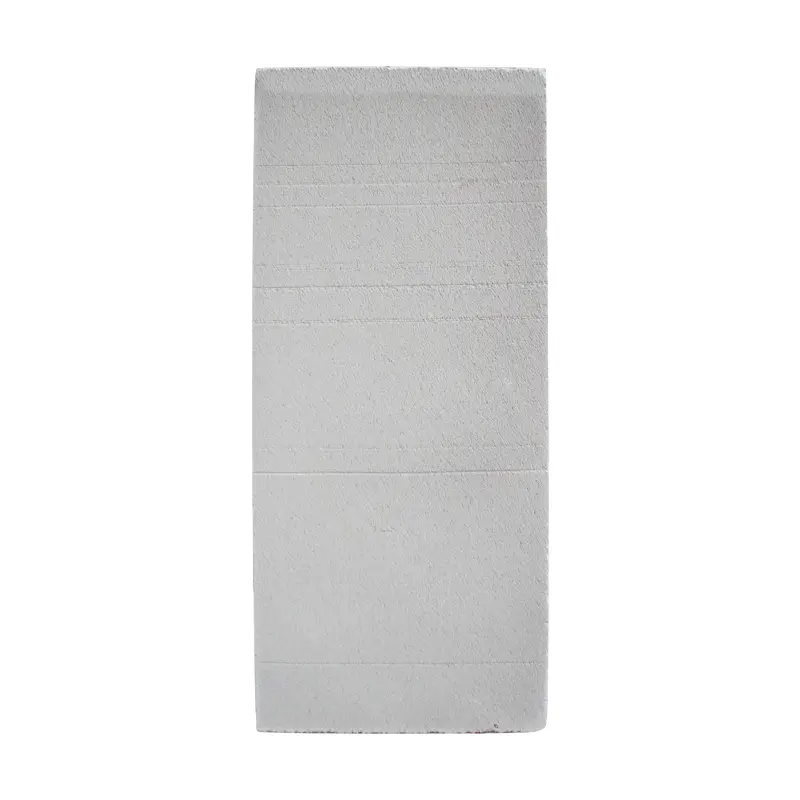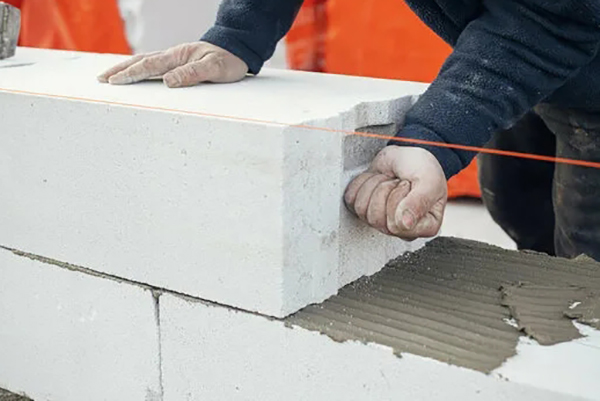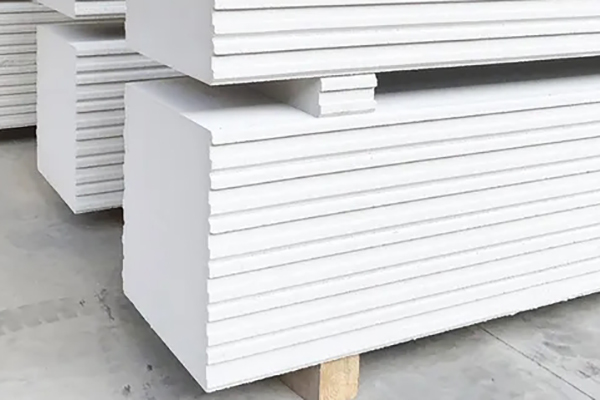Autoclaved Aerated Concrete (AAC) blocks have become increasingly popular in modern construction. But a common question arises, especially for those evaluating building materials: are AAC blocks suitable for load-bearing structures? This article dives deep into the properties, strengths, and limitations of AAC block usage in load-bearing applications. We’ll explore the advantages and disadvantages, compare them to traditional materials like concrete block and brick, and provide clarity for construction professionals, developers, and distributors like Mark Thompson, who value quality, consistency, and compliance. Understanding if you can use AAC blocks for structural support is crucial for making informed decisions on your next construction project.
1. What Exactly is Autoclaved Aerated Concrete (AAC) Block?
Autoclaved Aerated Concrete (AAC) is a lightweight, precast foam concrete building material. Invented in the mid-1920s by the Swedish architect and inventor Dr. Johan Axel Eriksson, AAC was developed to create a building material with properties similar to wood – good thermal insulation, solid structure, easy workability – but without the drawbacks of combustibility and decay. AAC blocks are essentially concrete masonry units but with a distinct internal porous structure containing millions of tiny, non-connected air pockets.
This unique cellular structure gives AAC blocks their characteristic lightweight property, making them significantly lighter than traditional concrete block or clay brick options. The aeration is achieved by adding an expanding agent to a mix of fine aggregates (like fly ash or sand), cement, lime, and water. The resulting material is then cured under heat and pressure in an autoclave, which contributes to its strength and dimensional stability. AAC blocks are widely used globally for both load-bearing and non-load-bearing walls, floors, and roofs.
The properties of AAC make it an attractive option for modern construction. Its lightweight nature reduces the overall dead load of a building, potentially leading to savings in structural frame and foundation requirements, especially in high-rise buildings. Furthermore, the air pockets trapped within AAC blocks contribute to excellent thermal insulation and sound insulation properties, enhancing building energy efficiency and occupant comfort. These unique properties distinguish AAC block products from conventional masonry blocks.

2. How Are AAC Blocks Manufactured? The Role of Key Ingredients
The manufacturing process for AAC blocks is quite sophisticated, ensuring consistency and quality. It starts with raw materials: silica-rich material (like sand or fly ash), cement, lime, gypsum, water, and a crucial component – an aluminum powder or paste, like the specialized Aluminium pastes for aerated concrete we produce at BTZmoc. These ingredients are carefully mixed into a slurry. The aluminum powder reacts chemically with the calcium hydroxide (from lime and cement hydration) to produce hydrogen gas.
This gas generation causes the slurry to expand, creating the characteristic closed-cell porous structure – think of it like dough rising. The volume can increase up to five times compared to the initial mixture. Once the expansion is complete and the mixture has reached a certain initial set (often referred to as ‘green cake’), it is precision-cut into blocks or panels of desired different sizes. The cutting process ensures high dimensional accuracy, making installation easier and reducing the need for thick mortar joints.
Finally, the cut elements are placed into a large autoclave. Here, they are cured under high pressure steam (typically 12-15 bar) at a high temperature (around 190°C or 374°F) for several hours. This autoclaving process triggers further chemical reactions, forming stable calcium silicate hydrates (primarily Tobermorite), which give the AAC block its final strength, durability, and stability. The quality of the aluminum paste is critical here, influencing the consistency of the pore structure and thus the block’s final density, strength, and thermal insulation performance. AAC blocks are produced with precision.
3. What Are the Primary Advantages of Using AAC Blocks in Construction?
The advantages of AAC blocks are numerous, making them a preferred building material in many construction projects. Perhaps the most cited benefit is their lightweight nature. AAC blocks are significantly lighter than traditional concrete blocks or red brick, typically weighing only 1/4 to 1/5th as much. This reduction in dead load has cascading benefits: smaller foundation requirements, reduced structural steel needs (especially in high-rise buildings), easier handling and transportation on site, and faster construction times.
Another major advantage is excellent thermal insulation. The millions of trapped air pockets give AAC blocks very low thermal conductivity. Buildings made with AAC require less energy for heating and air conditioning, resulting in significant savings on utility bills and a reduced carbon footprint. This excellent thermal insulation property helps meet increasingly stringent energy efficiency standards. Coupled with this is good sound insulation, making interiors quieter and more comfortable.
Furthermore, AAC blocks provide excellent fire resistance. Composed entirely of inorganic materials, AAC blocks are non-combustible and can withstand direct exposure to fire for extended periods (often 4 hours or more, depending on thickness) without releasing toxic fumes. This enhances fire safety significantly compared to traditional materials. They also offer good workability – AAC blocks are easy to cut, saw, drill, and shape using standard tools, simplifying the installation of electrical conduits and plumbing. The dimensional accuracy ensures tight joints, reducing mortar consumption and air leakage. AAC blocks are used widely due to these benefits.
4. Are There Significant Disadvantages or Limitations to Using AAC Blocks?
While there are many advantages of AAC blocks, it’s also important to consider the potential disadvantages of AAC blocks. One key consideration is their lower compressive strength compared to dense concrete block or some types of high-strength brick. While specific grades of AAC block are suitable for load-bearing applications (more on this later), they generally have lower strength-to-weight ratios than denser materials. This means thicker walls might be required for certain load-bearing scenarios, or they might not be suitable for very heavily loaded structures without significant engineering considerations.
Another potential issue is their relatively higher water absorption rate compared to dense concrete, due to their porous nature. Although the pores are mostly non-interconnected (closed-cell), the surface can absorb moisture. Proper plastering or cladding is essential, especially for exterior walls, to prevent water ingress. If AAC blocks become saturated, moisture can cause issues like reduced thermal insulation, potential spalling in freeze-thaw cycles (though autoclaving improves resistance), and potentially supporting mold growth if not properly finished and maintained. The low water absorption claimed by some manufacturers often refers to the capillary action within the material, but surface wetting is still a factor.
Brittleness can also be a concern. While strong under compression, AAC blocks may be more susceptible to chipping or damage during handling and transport compared to tougher red brick. Careful handling procedures are necessary. Finally, the cost per unit might be higher than traditional red bricks or basic concrete blocks in some regions, although this can often be offset by savings in labor, mortar, structural support, and long-term energy efficiency. Evaluating the total installed cost and life-cycle cost is crucial.

5. Understanding Load-Bearing Walls: What Defines a Load-Bearing Structure?
Before assessing if AAC blocks are suitable for load-bearing roles, let’s clarify what a load-bearing structure is. In essence, a load-bearing wall or element is one that supports weight from above – this could be the roof, upper floors, or other structural components – and transfers that load down to the foundation. These walls are critical to the overall stability and integrity of the building.
In contrast, non-load-bearing walls (often called partition walls) only support their own weight and do not carry loads from other parts of the structure. They primarily serve to divide spaces. Identifying which walls are load-bearing is a fundamental aspect of structural engineering and building design. Removing or altering a load-bearing wall without proper support can compromise the entire structure.
Traditional masonry construction, using materials like brick or concrete block, often relies heavily on load-bearing walls. In framed structures (like RCC framed structure – Reinforced Cement Concrete), the primary loads are carried by beams and columns, and the walls might be infill panels (often non-load-bearing). However, even in framed structures, some masonry walls might be designed as shear walls or contribute partially to load resistance. The key is whether the wall is designed to carry and transfer vertical loads.
6. Can AAC Blocks Truly Handle the Load? Evaluating Their Load-Bearing Capacity
Yes, AAC blocks can be used for load-bearing walls, but with important qualifications. The suitability depends heavily on the specific grade (density and strength) of the AAC block and the structural design requirements. AAC blocks are manufactured in various density classes, which directly correlate with their compressive strength. Lower density blocks offer better thermal insulation but have lower strength, making them more suitable for non-load-bearing applications or low-rise load-bearing structures with moderate loads.
Higher density AAC blocks offer greater compressive strength and are specifically designed for load-bearing applications. The load-bearing capacity of an AAC block wall also depends on factors like wall thickness, height, support conditions, the type of mortar used, and the presence of reinforcement (if any). Building codes and standards (like Eurocode 6 or relevant ASTM standards) provide guidelines and design rules for using AAC blocks in load-bearing masonry.
It’s crucial to consult with a structural engineer who can assess the specific loads and design the load-bearing elements appropriately using the correct grade of AAC block. For many low-to-medium-rise residential and commercial buildings, AAC blocks for load bearing structure are a perfectly viable and often advantageous option due to their combination of adequate strength, light weight, and insulation properties. AAC blocks are preferred by many architects for these reasons.
7. Which Types of AAC Blocks Are Recommended for Load-Bearing Applications?
Not all AAC blocks are created equal when it comes to load-bearing capacity. The key differentiator is the density and the corresponding compressive strength. Manufacturers typically classify AAC blocks into different grades or density classes. For example, common density classes might range from 300 kg/m³ (primarily for insulation) up to 700 kg/m³ or higher.
Generally, AAC blocks intended for load-bearing walls will have a higher density and, consequently, a higher specified minimum compressive strength. Typical strength classes for load-bearing AAC might be designated as AAC-2, AAC-4, AAC-6 (or similar classifications based on N/mm²), indicating the minimum compressive strength.
- Lower Strength Grades (e.g., AAC-2): Often used for non-load-bearing partitions or potentially very light load-bearing applications in low-rise buildings, subject to engineering approval.
- Medium Strength Grades (e.g., AAC-4): Commonly used for load-bearing walls in residential and commercial buildings up to several stories high. This is often the sweet spot balancing strength, weight, and insulation.
- Higher Strength Grades (e.g., AAC-6 or higher): Used for structures requiring greater load-bearing capacity, potentially taller buildings or specific structural elements.
It’s essential to select the aac block types specified by the structural engineer based on calculations adhering to local building codes. Using a lower grade than specified can compromise structural integrity. Always verify the manufacturer’s specifications and certifications for the compressive strength of the AAC blocks being considered.

8. How Do AAC Blocks Compare to Traditional Concrete Blocks and Bricks for Load-Bearing Walls?
When comparing AAC blocks to traditional concrete blocks and red brick for load-bearing walls, several factors come into play:
| Feature | AAC Blocks (Load-Bearing Grade) | Traditional Concrete Block (Dense) | Traditional Red Brick (Clay) |
|---|---|---|---|
| Weight | Very Lightweight (400-700 kg/m³) | Heavy (1800-2200 kg/m³) | Heavy (1600-1900 kg/m³) |
| Compressive Strength | Moderate (2-8+ N/mm²) | High (5-20+ N/mm²) | Variable, can be High (5-35+ N/mm²) |
| Thermal Insulation | Excellent | Poor to Moderate | Moderate |
| Fire Resistance | Excellent (Non-combustible) | Good (Non-combustible) | Good (Non-combustible) |
| Workability | Excellent (Easy to cut/shape) | Moderate | Moderate (Requires cutting) |
| Dimensional Accuracy | High | Moderate | Variable |
| Mortar Consumption | Low (Thin-bed mortar often used) | High (Thick mortar joints) | High (Thick mortar joints) |
| Speed of Construction | Faster | Slower | Slower |
| Water Absorption | Moderate (Surface wetting) | Low | Moderate to High |
Key Takeaways from the Comparison:
- Weight: AAC blocks are significantly lighter, reducing structural dead load and easing handling. This is a major advantage, especially for high-rise buildings or sites with poor soil conditions.
- Strength: While AAC blocks have lower compressive strength than dense concrete block or high-strength brick, specified load-bearing grades are sufficient for many applications. For very high loads, traditional materials might be preferred or required.
- Insulation: AAC blocks offer far superior thermal insulation, reducing the need for additional insulation layers and lowering energy costs.
- Construction: The larger size, lighter weight, and precision of AAC blocks generally lead to faster construction and lower labor costs. Thin-bed mortar also speeds up work and reduces material usage.
- Cost: While the unit cost of AAC blocks might be higher, the overall project cost can be lower due to savings in structure, labor, mortar, insulation, and faster completion times.
The choice between AAC block, concrete block, and brick depends on the specific project requirements, including load demands, energy efficiency targets, budget, local material availability, and labor skills. For many modern projects prioritizing thermal performance and construction speed, AAC blocks are an excellent choice for load-bearing walls.
9. What Critical Design and Construction Practices Must Be Followed When Using AAC Blocks in Load-Bearing Structures?
Successfully using AAC blocks in load-bearing structures requires adherence to specific design principles and construction best practices. Overlooking these can compromise performance and safety. As a supplier focused on quality inputs like specialized aluminum pastes, we understand the importance of correct application downstream.
Key Design Considerations:
- Structural Analysis: A qualified structural engineer must perform calculations based on anticipated loads (dead, live, wind, seismic) and select the appropriate grade (strength class) of AAC block.
- Code Compliance: Design must strictly adhere to relevant national and local building codes for AAC masonry (e.g., ACI 523, Eurocode 6).
- Wall Dimensions: Minimum wall thicknesses, maximum heights, and slenderness ratios for load-bearing AAC block walls must be respected as per code provisions.
- Control Joints: Proper placement of control joints is necessary to manage potential shrinkage and thermal movement, preventing uncontrolled cracking.
- Reinforcement: Depending on the loads, height, and seismic zone, reinforcement (like vertical rebar in grouted cores or horizontal bed joint reinforcement) may be required.
- Lintels and Beams: Openings for doors and windows require properly designed lintels (often reinforced AAC lintels or concrete beams) to distribute loads around the opening. Connection details between walls, floors, and roofs are critical.
Key Construction Practices:
- Material Handling: Handle AAC blocks carefully to avoid chipping or breakage. Store them off the ground and protect them from excessive moisture before installation.
- Mortar Selection: Use the type of mortar specified by the manufacturer or engineer, typically a thin-bed mortar designed for AAC, which ensures tight joints and optimal performance. Traditional thick cement mortar may not be suitable or efficient.
- Workmanship: Ensure blocks are laid level and plumb, with fully filled mortar joints according to specifications (especially critical for thin-bed mortar). Cutting should be done accurately with appropriate tools.
- Moisture Protection: Protect walls from rain during construction. Apply appropriate plaster, stucco, or cladding systems soon after erection to prevent long-term water ingress, especially on exterior surfaces. Ensure proper flashing details.
- Chasing and Services: Plan routes for electrical and plumbing services. Chasing (cutting grooves) should be done carefully according to guidelines to avoid excessively weakening the wall.
Adherence to these practices ensures the load-bearing AAC block structure performs as intended, offering both strength and durability. Companies like ours, providing foundational materials like AAC Block and ALC Wallboard, rely on skilled architects and builders to implement these correctly.

10. Beyond Strength: What Are the Long-Term Benefits of Employing Load-Bearing AAC Blocks?
The benefits of using AAC blocks for load-bearing structures extend well beyond just carrying weight. Their unique combination of properties delivers significant long-term advantages for building owners and occupants. These benefits make AAC blocks suitable for high-rise buildings and various other buildings and structures.
Firstly, the excellent thermal insulation inherent in AAC blocks translates directly into sustained energy savings over the building’s lifespan. Reduced reliance on heating and cooling systems lowers operational costs and contributes to environmental sustainability. This thermal performance is consistent and doesn’t degrade over time, unlike some added insulation materials. AAC blocks provide excellent thermal comfort.
Secondly, the enhanced fire resistance provides lasting safety and peace of mind. AAC blocks are non-combustible and do not contribute fuel to a fire, potentially limiting fire spread and structural damage, leading to lower insurance premiums and increased occupant safety. This fire safety aspect is crucial in all types of construction.
Thirdly, the durability of autoclaved aerated concrete means structures made with AAC have a long service life. They are resistant to pests like termites and rodents, and do not rot or decay. When properly protected from moisture, AAC block walls maintain their structural integrity and insulating properties for decades. Furthermore, the sound insulation properties contribute to a quieter, more comfortable indoor environment, enhancing occupant well-being. The lightweight and porous nature aids acoustic dampening.
11. When Should You Avoid Using AAC Blocks for Load-Bearing Purposes?
Despite their versatility, there are situations where AAC blocks might not be the optimal choice for load-bearing applications, or where their use requires extra caution. Understanding these limitations is as important as knowing their strengths.
Primarily, for structures subjected to extremely high compressive loads, the inherent strength limitations of even high-grade AAC blocks might make traditional dense concrete block, reinforced concrete, or steel frame construction more appropriate. While strong for their weight, AAC block walls cannot match the ultimate load-bearing capacity of these denser materials without becoming impractically thick.
In environments with constant high moisture exposure or where adequate protection against water ingress cannot be guaranteed, the potential for water absorption could be a concern. While proper finishing mitigates this, in chronically damp conditions (e.g., below-grade basement walls in high water table areas without robust waterproofing), alternative masonry might be considered. The water absorption rate needs careful management.
Areas requiring very high impact resistance or resistance to abrasion might also favor denser materials. While durable, the surface of AAC blocks is softer than dense concrete or hard-fired brick and can be damaged by sharp impacts. Finally, projects where the absolute lowest initial material cost is the only driving factor might lean towards traditional red bricks or basic concrete blocks, although this often ignores the lifecycle savings and construction efficiencies offered by AAC block systems. An architect or engineer should always make the final determination based on project specifics.
Key Takeaways: AAC Blocks and Load-Bearing Structures
To summarize the key points regarding the use of AAC blocks in load-bearing applications:
- Yes, AAC blocks can be used for load-bearing structures, provided the correct strength grade is selected and proper design and construction practices are followed.
- Key Advantages: Lightweight (reducing dead load), excellent thermal insulation (energy savings), superior fire resistance, good sound insulation, dimensional accuracy, and faster construction speed.
- Limitations: Lower compressive strength than dense concrete/brick (requiring appropriate grade selection), potential for surface water absorption (needs proper finishing), and relative brittleness (requires careful handling).
- Critical Factors: Always use AAC blocks with certified compressive strength suitable for the calculated loads. Adhere strictly to engineering designs and building code requirements for AAC masonry. Use the recommended thin-bed mortar.
- Comparison: AAC blocks often offer a better overall package (considering insulation, speed, and reduced structural load) than traditional concrete block or red brick for many low-to-medium-rise load-bearing applications.
- Application: Highly suitable for residential buildings, commercial structures, hotels, schools, and even high-rise infill or specific load-bearing designs where their unique properties are advantageous.
Ultimately, Autoclaved Aerated Concrete (AAC) blocks represent a modern, efficient, and sustainable building material that is indeed suitable for load-bearing roles when specified and installed correctly. Partnering with knowledgeable suppliers like BTZmoc ensures access to high-quality materials, forming the foundation for successful construction projects.
Post time: 4 月-28-2025




